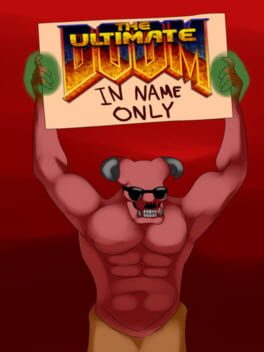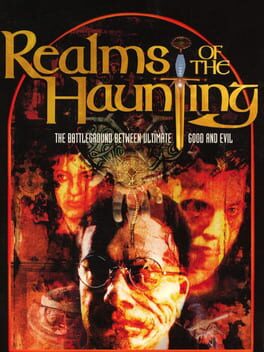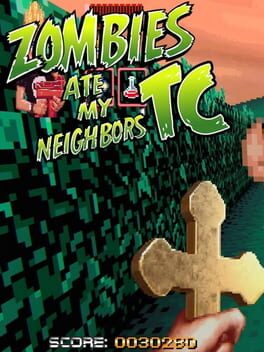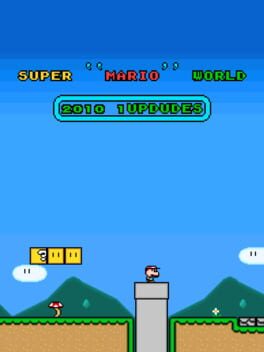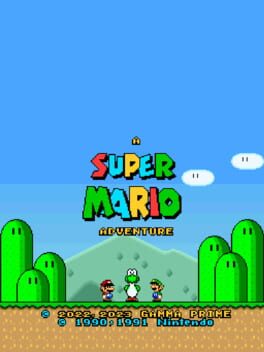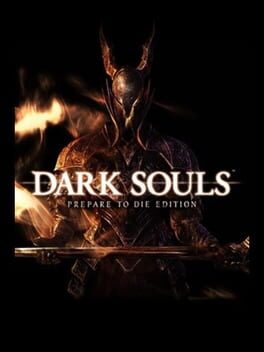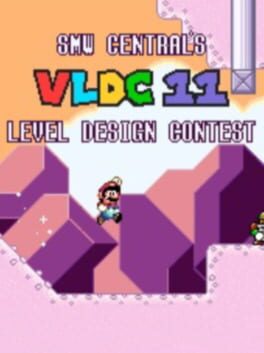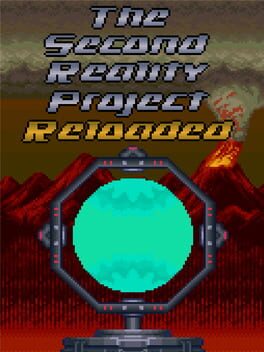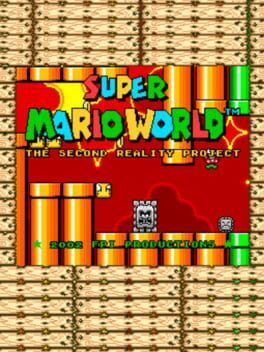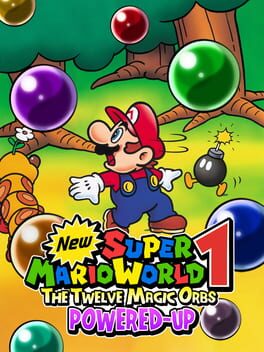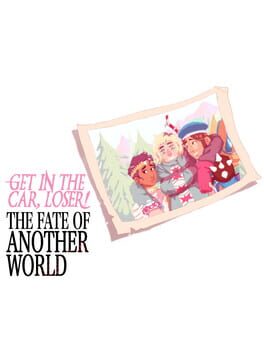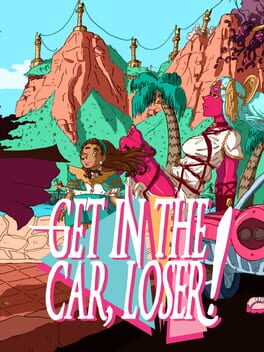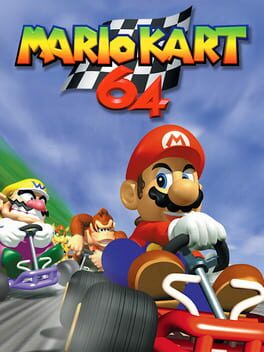DoubleCakes
Admittedly, a lot of my problems with this wad is that it's a Doom 1 wad. That means a smaller enemy roster than what I'm used to and no super shotgun, although I mitigated that problem by using a weapon mod.
I'm also not a big fan of huge levels with big enemy counts. Even if I was tearing through them with a cool shotgun and assault rifle, it got exhausting quickly. I got through four levels and wanted to drop the playthrough. I feel even more confident in the opinion that this wasn't a great idea for a community wad, in the end.
The thing about Doom 2 In Name Only is that the concept came out better in that version. Doom 2's levels had very specific names that were barely reflected in the levels itself. In the first Doom, levels like Command Control and Central Processing have very tech-basey names so the level the mappers make for those levels are just bigger, more detailed techbases.
I was really looking forward to this one but quickly grew impatient. This is probably really good in someone's eyes– that person isn't me.
I'm also not a big fan of huge levels with big enemy counts. Even if I was tearing through them with a cool shotgun and assault rifle, it got exhausting quickly. I got through four levels and wanted to drop the playthrough. I feel even more confident in the opinion that this wasn't a great idea for a community wad, in the end.
The thing about Doom 2 In Name Only is that the concept came out better in that version. Doom 2's levels had very specific names that were barely reflected in the levels itself. In the first Doom, levels like Command Control and Central Processing have very tech-basey names so the level the mappers make for those levels are just bigger, more detailed techbases.
I was really looking forward to this one but quickly grew impatient. This is probably really good in someone's eyes– that person isn't me.
2023
This is a very enjoyable Doom wad. The levels are snappy with only a few of them having monster counts above 100. The venues are nice and find a nice middle ground between classic Doom level design with modern attention to detail.
I think what knocks this one down a half mark is the abundance of archie traps. Especially towards the end, the game liked to pull the trick of having archviles spawn in after hitting a switch. It got exhausting.
I would prefer the first Nostalgia over this one. It's a tamer video game experience.
I think what knocks this one down a half mark is the abundance of archie traps. Especially towards the end, the game liked to pull the trick of having archviles spawn in after hitting a switch. It got exhausting.
I would prefer the first Nostalgia over this one. It's a tamer video game experience.
This is an interesting mid-90s FPS curiosity but unfortunately, I think the issues with the game outweigh the good. I like manor environments and the manor is this game is pretty big and cozy to explore. The game’s jank is charming and– frankly– I played this for the jank and the jank is pretty manageable for the most part. The game has a weird idea of aiming your weapons alongside an old school idea of moving your character around.
I lost my patience during Chapter XVI, though, where you have to search a large dark dungeon for 16 brains. I dropped the game and watched the rest on YouTube. Disappointing but I made the right decision instead of playing the rest of the game and being bitter about it.
I first experienced this game by watching a stream of it years ago, and that’s probably the best way to check it out. A streamer streaming with people in chat making jokes about the FMV cutscenes. It’s a shame that it ended for me on a sour note but I’m glad to have this once under my fingers.
I lost my patience during Chapter XVI, though, where you have to search a large dark dungeon for 16 brains. I dropped the game and watched the rest on YouTube. Disappointing but I made the right decision instead of playing the rest of the game and being bitter about it.
I first experienced this game by watching a stream of it years ago, and that’s probably the best way to check it out. A streamer streaming with people in chat making jokes about the FMV cutscenes. It’s a shame that it ended for me on a sour note but I’m glad to have this once under my fingers.
I've played the 16 level demo of this total conversion mod and had a good time. A lot of attention was paid to make sure that the mechanics of ZAMN work in this FPS framework. It's a very functional gameplay.
My problems come from what doesn't need to exist in a top-down game versus a first person shooter. There is a lack of sound effects for monsters. These SFX were in the original SNES game but in a first person shooter where you don't have a good range of vision around you it's good to have sound effects for monsters when they are approaching or spawning.
The ammo rates have been changed to accommodate a different perspective. Ammo for the water gun is reduced because you'll likely be deadlier with the weapon with first person aiming. There's still a lot of awkwardness in this game but I had a lot of fun and these level conversions are near spotless. There's also original levels that take advantage of the game's verticality and 3Dness that really let the idea shine.
My problems come from what doesn't need to exist in a top-down game versus a first person shooter. There is a lack of sound effects for monsters. These SFX were in the original SNES game but in a first person shooter where you don't have a good range of vision around you it's good to have sound effects for monsters when they are approaching or spawning.
The ammo rates have been changed to accommodate a different perspective. Ammo for the water gun is reduced because you'll likely be deadlier with the weapon with first person aiming. There's still a lot of awkwardness in this game but I had a lot of fun and these level conversions are near spotless. There's also original levels that take advantage of the game's verticality and 3Dness that really let the idea shine.
2010
This is a joke hack and has some trolly moments but there's a lot of pretty solid level design and the difficulty is mostly consistent. I think that's why its sequel is so acclaimed, since it's a proper SMW romhack with a whole world explore, just with goofy graphics. This first title in the "Mario" World series sets the ground, though.
I can give this less than a perfect 10 and what does it matter? Any less-than-immaculate rating cannot take away just how much of a consummate work of art Dark Souls is. This game’s main factors are excellent and blend together so well. The mechanics, the structure, the world-building, the lore… the stew they make together is amazing.
Back in 2011, Dark Souls showed everyone what a cohesive piece of art a video game could be and the years have not done a disservice to it. It still feels great to play, the world is captivating, and just about every little detail is worth exploring. That’s what it gets down to: just about everything here is worth examining like any other great piece of art in history.
I could mention some of its flaws like the camera can betray you at the most crucial moments or how the collision physics in the Crystal Cave are pretty bad because, hey, those criticisms are legitimate! But art is more than just weighing pros versus cons, so in case you were wondering why I could give a game like this a 9 out of 10 and then say it was one of the greatest pieces of video game art, that’s why.
Back in 2011, Dark Souls showed everyone what a cohesive piece of art a video game could be and the years have not done a disservice to it. It still feels great to play, the world is captivating, and just about every little detail is worth exploring. That’s what it gets down to: just about everything here is worth examining like any other great piece of art in history.
I could mention some of its flaws like the camera can betray you at the most crucial moments or how the collision physics in the Crystal Cave are pretty bad because, hey, those criticisms are legitimate! But art is more than just weighing pros versus cons, so in case you were wondering why I could give a game like this a 9 out of 10 and then say it was one of the greatest pieces of video game art, that’s why.
The SMW community once again comes together to make a cornucopia of great levels. Some are very puzzly, some are surreal, some are artsy, and some are kaizo hard but in general the quality across this romhack is great. I had a splendid time playing these little adventures. Sure the difficulty and quality could fluctuate but I gave myself the rule that if a level was too frustrating, I could just skip. And I did that for a handful of them.
For the most part though, I enjoyed these levels. They were tough but not beyond my ability. I got a wide variety of themes and environments. There was an array of design styles. Altogether, this hack’s feast of level design was easy to love.
I’ve been playing this one on and off for a couple years and I even quit for a brief time because I wasn’t getting the same euphoria I did playing the 9th vanilla level design hack years prior, but eventually I loaded VLDC11 up again and it got infectious for me. I think VLDC9 is always going to standout because I had never played a collaboration hack before and its presentation blew me away. VLDC11, though, is pound-for-pound better than #9.
This annual thing bring out a lot of quality levels.
For the most part though, I enjoyed these levels. They were tough but not beyond my ability. I got a wide variety of themes and environments. There was an array of design styles. Altogether, this hack’s feast of level design was easy to love.
I’ve been playing this one on and off for a couple years and I even quit for a brief time because I wasn’t getting the same euphoria I did playing the 9th vanilla level design hack years prior, but eventually I loaded VLDC11 up again and it got infectious for me. I think VLDC9 is always going to standout because I had never played a collaboration hack before and its presentation blew me away. VLDC11, though, is pound-for-pound better than #9.
This annual thing bring out a lot of quality levels.
So this is my second time finishing The Second Reality Project Reloaded and I think I had a better time this playthrough compared to the first. Maybe it’s my skill having gone up since I first journeyed this romhack 5 years ago or maybe it was me playing this hack alongside the original’s gruesomely hard version 1.5 and thus this version reflected better, but I was less frustrated with this game compared to when I beat it in 2019.
Although this romhack gets pretty difficult, it’s still easier than the original and the difficulty curve is much smoother with only a few spikes across the campaign. That doesn’t mean every rough edge is sanded down. There are still a handful of levels that are plain too long for a single checkpoint. I was using save states– even moreso than my simultaneous playthrough– so I didn’t feel that lack of checkpoints but god does it knock the difficulty up a bracket.
The new graphics are nice although I think many sprites aren’t animated well. Most of the music is good, though. Having played this alongside the original you can see how closely the campaign of this romhack follows the template of SMW vanilla. For the most part, anyway. Absent from the 2002 original, there’s a second secret world that serves as a finale and accessing it is a cool secret altogether. I can see why this blew people away in 2008.
Most of the updates have to do with Reloaded’s presentation so I’m going to repeat a lot of what I said in my review of the original romhack and say that the level design very clever and stylized. It’s a good time playing through TSRPR if you are ready for some challenge. This one holds up.
Although this romhack gets pretty difficult, it’s still easier than the original and the difficulty curve is much smoother with only a few spikes across the campaign. That doesn’t mean every rough edge is sanded down. There are still a handful of levels that are plain too long for a single checkpoint. I was using save states– even moreso than my simultaneous playthrough– so I didn’t feel that lack of checkpoints but god does it knock the difficulty up a bracket.
The new graphics are nice although I think many sprites aren’t animated well. Most of the music is good, though. Having played this alongside the original you can see how closely the campaign of this romhack follows the template of SMW vanilla. For the most part, anyway. Absent from the 2002 original, there’s a second secret world that serves as a finale and accessing it is a cool secret altogether. I can see why this blew people away in 2008.
Most of the updates have to do with Reloaded’s presentation so I’m going to repeat a lot of what I said in my review of the original romhack and say that the level design very clever and stylized. It’s a good time playing through TSRPR if you are ready for some challenge. This one holds up.
Although I have played and finished this romhack’s 2008 remake, I wanted to play the original Second Reality Project for the sake of curiosity. What were romhacks like in 2002 when the scene was young and the tools were new? I wanted some romhack rawness from a time before hack design ideas got codified in the community.
Granted, you can get 99% of that through this romhack’s Reloaded update as I quickly learned playing this version. It wasn’t long into my playthrough of this game that I loaded up Reloaded and played it alongside this one. Obsessive, but it gave me clear perspective on what makes this romhack special and helped me reappraise Reloaded.
There’s a charm that comes with this early version where vanilla assets are used in strange ways. There are a lot of levels where monocoloured pipes are a foundational terrain feature and brown blocks are used to represent the walls of a building. The hack is experimental in that the creator had to use these assets because they had nothing else. The remake avoids this problem by importing tilesets that fit themes any level is going for.
But, like the use of the final boss theme in the “Aggressive Water” level, I appreciate the strangeness. It gives the hack an absurd quality that works well with its idiosyncratic level design elements. You can see how this hack is extending off of the original SMW’s design tendencies and if you ask me, the levels in this hack are great for the most part. Even twenty years later, this hack has a lot of character and style.
A lot of the levels use SMW’s mechanics in clever ways or communicate interesting themes. This hack often had sections with spaced out platforms that were difficult but gave the level a vast feel. This is only present in a few stages but this hack also repeats section of level– not absolutely copy-and-pasted but mostly the same with small changes between iteration like changing up enemies or changing terrain slightly. It gives those levels a song-like structure with verses and choruses.
This hack gets too difficult, though. For a long time, I remembered this hack (or Reloaded, rather) having a lot of very long levels. Most levels are decently sized, actually. Some levels are quite long, though, and would be gruesome if not for save states. The remake is better about checkpoints but there’s so much you can do with a single checkpoint in a stage that’s 5+ sublevels long. The final levels are really rough, too. Some of the jumps in “Bowser’s Starship” were kaizo-like.
I’m one of the few people on this planet who could be enriched by playing this original version of Second Reality Project. I like its surreal environments and playing with vanilla textures allowed me to appreciate its unique designs that I didn’t grok when I played Reloaded and had a lot of those qualities obscured by the hack’s custom tilesets.
Ultimately though, Reloaded is the definitive version of this game. Among other things, this version of the hack had a lot of moments where enemies didn’t spawn in when they were supposed to. Maybe it was a problem with the memory that Reloaded fixed, but it happened somewhat frequently. If you are going to play The Second Reality Project, there’s little reason not to play the remake.
Granted, you can get 99% of that through this romhack’s Reloaded update as I quickly learned playing this version. It wasn’t long into my playthrough of this game that I loaded up Reloaded and played it alongside this one. Obsessive, but it gave me clear perspective on what makes this romhack special and helped me reappraise Reloaded.
There’s a charm that comes with this early version where vanilla assets are used in strange ways. There are a lot of levels where monocoloured pipes are a foundational terrain feature and brown blocks are used to represent the walls of a building. The hack is experimental in that the creator had to use these assets because they had nothing else. The remake avoids this problem by importing tilesets that fit themes any level is going for.
But, like the use of the final boss theme in the “Aggressive Water” level, I appreciate the strangeness. It gives the hack an absurd quality that works well with its idiosyncratic level design elements. You can see how this hack is extending off of the original SMW’s design tendencies and if you ask me, the levels in this hack are great for the most part. Even twenty years later, this hack has a lot of character and style.
A lot of the levels use SMW’s mechanics in clever ways or communicate interesting themes. This hack often had sections with spaced out platforms that were difficult but gave the level a vast feel. This is only present in a few stages but this hack also repeats section of level– not absolutely copy-and-pasted but mostly the same with small changes between iteration like changing up enemies or changing terrain slightly. It gives those levels a song-like structure with verses and choruses.
This hack gets too difficult, though. For a long time, I remembered this hack (or Reloaded, rather) having a lot of very long levels. Most levels are decently sized, actually. Some levels are quite long, though, and would be gruesome if not for save states. The remake is better about checkpoints but there’s so much you can do with a single checkpoint in a stage that’s 5+ sublevels long. The final levels are really rough, too. Some of the jumps in “Bowser’s Starship” were kaizo-like.
I’m one of the few people on this planet who could be enriched by playing this original version of Second Reality Project. I like its surreal environments and playing with vanilla textures allowed me to appreciate its unique designs that I didn’t grok when I played Reloaded and had a lot of those qualities obscured by the hack’s custom tilesets.
Ultimately though, Reloaded is the definitive version of this game. Among other things, this version of the hack had a lot of moments where enemies didn’t spawn in when they were supposed to. Maybe it was a problem with the memory that Reloaded fixed, but it happened somewhat frequently. If you are going to play The Second Reality Project, there’s little reason not to play the remake.
Last year, I finished The Second Reality Project 2 and Super Mario World Central Production 2 and those two titles vied to be my new favourite SMW romhack. But in comes New Super Mario World 1: The Twelve Magic Orbs POWERED-UP, a game I loved as much as its title is long.
Its fundamentals are unchanged from SMW proper, aside from disallowing powerups to be saved and allowing certain powerups to arc their projectiles upwards. What it adds, besides tons new levels, are a dozen new powerups. Ice Mario shoots freezing balls instead of fireballs. Bubble Mario shoots bubbles which turn enemies into bubbles that can be used as a good boost jump. This leads to my big flaw with the romhack...
Some powerups aren’t very good. Cloud Mario is cumbersome to use effectively. The game has the super leaf as a powerup– Raccoon Mario from SMB3. It uses that tap-jump-to-fly input method which I think is annoying. SMW fixed that with its Cape Mario (which is in this game, too!) which was easier on the hands.
And some of them are not very clever conceptually. Superball Mario is like what if Fire Mario’s fireballs bounced indefinitely and you could only use one at a time. There’s also the game using special blocks that require specific powerups to break (which, to be fair, are always available in the level). Some powerups fit very well into SMW’s moveset and previously established powerup system, but only a couple.
I had a great time anyway. The level design is top-notch and there is a lot of level in this game. It’s hard to elaborate but there weren’t many levels I’d say were outright mediocre aside from gimmicky ones like the minecart levels or maybe the ice levels with their ubiquitous slippery surfaces. World progression is very simple with one world leading to the next and only one secret exit per world that would lead to a switch palace or some other bonus. Maybe it was the size of the game map but the world of The Twelve Magic Orbs felt expansive.
And after I scoured the game for all 276 Star Coins so I could unlock the secret final world, I completed the last couple challenges. The game ends on a cool climax and once I was done, I looked back on a superb romhack. This one is my new favourite.
Its fundamentals are unchanged from SMW proper, aside from disallowing powerups to be saved and allowing certain powerups to arc their projectiles upwards. What it adds, besides tons new levels, are a dozen new powerups. Ice Mario shoots freezing balls instead of fireballs. Bubble Mario shoots bubbles which turn enemies into bubbles that can be used as a good boost jump. This leads to my big flaw with the romhack...
Some powerups aren’t very good. Cloud Mario is cumbersome to use effectively. The game has the super leaf as a powerup– Raccoon Mario from SMB3. It uses that tap-jump-to-fly input method which I think is annoying. SMW fixed that with its Cape Mario (which is in this game, too!) which was easier on the hands.
And some of them are not very clever conceptually. Superball Mario is like what if Fire Mario’s fireballs bounced indefinitely and you could only use one at a time. There’s also the game using special blocks that require specific powerups to break (which, to be fair, are always available in the level). Some powerups fit very well into SMW’s moveset and previously established powerup system, but only a couple.
I had a great time anyway. The level design is top-notch and there is a lot of level in this game. It’s hard to elaborate but there weren’t many levels I’d say were outright mediocre aside from gimmicky ones like the minecart levels or maybe the ice levels with their ubiquitous slippery surfaces. World progression is very simple with one world leading to the next and only one secret exit per world that would lead to a switch palace or some other bonus. Maybe it was the size of the game map but the world of The Twelve Magic Orbs felt expansive.
And after I scoured the game for all 276 Star Coins so I could unlock the secret final world, I completed the last couple challenges. The game ends on a cool climax and once I was done, I looked back on a superb romhack. This one is my new favourite.
The Fate of Another World is a nice coda to Get in the Car, Loser! I found myself enjoying the story a lot more than the prime GITCL experience, mostly because there's more interparty tension and there's an urgency to the plot. The new enemies are pretty cool and I enjoyed the dispowerment of having everyone "cursed" at the start of the adventure and slowly reclaiming my stolen strength.
The new music is pretty good, too. If this is the final chapter to Get in the Cat, Loser! then it's a good one.
The new music is pretty good, too. If this is the final chapter to Get in the Cat, Loser! then it's a good one.
I’m a Final Fantasy XIII sicko so when I found out that Get in the Car, Loser! was heavily inspired by the divisive but unique 2009 JRPG, I raised a brow in curiosity. A lot of indie JRPGs are concerned with “fixing” the typical idea of the genre which has never grabbed my interest. Someone making something inspired by FF13, though? That is a decision. Call me a “l’cie” because playing that game would be my Focus.
Get in the Car, Loser!’s take on FF13’s combat sands off a lot of the extraneous math from the original game’s design and simplifies things, for the better I think. The lack of proper exploration that most JRPGs have makes GITCL snappier. There isn’t a lot of stat math, either. The game gets a lot out of a little and maybe it wears out its mechanics quicker than other RPGs but that’s okay because it’s also a shorter experience, clocking in at about ten hours.
The combat loop took some getting used to but once I wrapped my head around it, I liked shifting through the three boards the game gives you and then topping off a cycle with Grace’s Fate attack. There’s more customization and equipping trinkets to switch up a hero’s moveset is the most drastic (and dynamic) difference between this game and the FF13 that inspired it.
I didn’t like juggling elemental affinities, though. Too often did I restart a battle because I had a Ravage attack the same element as an enemy. On the positive side: healing spells being temporary worked as a good balance between the urgency of combat compared to the long-term strategy of a battle.
On that note, making the protagonist a support character (instead of a mainline fighter) is a nice twist on a JRPG trope. I guess maybe that’s why the story is so focused on personal problems rather than a big fantastic plot? I can’t say I like it, though. There is some cool lore in this game that feels very inspired by later Final Fantasy games, but most of the in-car dialogue is concerned with the anxieties of the characters rather than the plot at hand. I don’t mind a lot of soul-searching– road trip stories typically have their characters be introspective and reflect on things– but the balance is heavy on the contemplation side and not enough on anything else. A lot of the discussion is about queerness and a lot of it was stuff I’ve seen before. It’s took until Act III and Sam to examine her own problematic thoughts for anything to get interesting. The game also employs that “texty” ironic dialogue style unconcerned with correct punctuation and spelling and I am not the person for that.
The villains are modern fascists taken wholesale out of the real world. The game opens with some dickweed harassing Sam with a monologue you could read off of Twitter. I don’t mind these kinds of jagoffs being the villains in the story but it’s extremely blunt with it. The fascists worship the main villain the but the rest of the narrative doesn’t do a good job of tying queerness and fascism to the world-building in a way that feels like a wasted opportunity.
The game’s road trip theming and modernpunk setting feels distinctly inspired by Final Fantasy XV. I like how all the healing items are corner store food like samosas and bottles of iced tea. I like the general style of the game, too. The music’s great. It seems to take more from the Persona games than any Final Fantasy with its funk-soul flavour across many tracks. The vocal track battle themes quickly got stuck in my head and I’m also a big fan of the “Store ‘n’ Gas” theme with its psyched up production.
I complain a lot but this ended up being my favourite new game experience of 2024 and I this is still very much worth checking out even if you are not a FF13 goblin like myself.
Get in the Car, Loser!’s take on FF13’s combat sands off a lot of the extraneous math from the original game’s design and simplifies things, for the better I think. The lack of proper exploration that most JRPGs have makes GITCL snappier. There isn’t a lot of stat math, either. The game gets a lot out of a little and maybe it wears out its mechanics quicker than other RPGs but that’s okay because it’s also a shorter experience, clocking in at about ten hours.
The combat loop took some getting used to but once I wrapped my head around it, I liked shifting through the three boards the game gives you and then topping off a cycle with Grace’s Fate attack. There’s more customization and equipping trinkets to switch up a hero’s moveset is the most drastic (and dynamic) difference between this game and the FF13 that inspired it.
I didn’t like juggling elemental affinities, though. Too often did I restart a battle because I had a Ravage attack the same element as an enemy. On the positive side: healing spells being temporary worked as a good balance between the urgency of combat compared to the long-term strategy of a battle.
On that note, making the protagonist a support character (instead of a mainline fighter) is a nice twist on a JRPG trope. I guess maybe that’s why the story is so focused on personal problems rather than a big fantastic plot? I can’t say I like it, though. There is some cool lore in this game that feels very inspired by later Final Fantasy games, but most of the in-car dialogue is concerned with the anxieties of the characters rather than the plot at hand. I don’t mind a lot of soul-searching– road trip stories typically have their characters be introspective and reflect on things– but the balance is heavy on the contemplation side and not enough on anything else. A lot of the discussion is about queerness and a lot of it was stuff I’ve seen before. It’s took until Act III and Sam to examine her own problematic thoughts for anything to get interesting. The game also employs that “texty” ironic dialogue style unconcerned with correct punctuation and spelling and I am not the person for that.
The villains are modern fascists taken wholesale out of the real world. The game opens with some dickweed harassing Sam with a monologue you could read off of Twitter. I don’t mind these kinds of jagoffs being the villains in the story but it’s extremely blunt with it. The fascists worship the main villain the but the rest of the narrative doesn’t do a good job of tying queerness and fascism to the world-building in a way that feels like a wasted opportunity.
The game’s road trip theming and modernpunk setting feels distinctly inspired by Final Fantasy XV. I like how all the healing items are corner store food like samosas and bottles of iced tea. I like the general style of the game, too. The music’s great. It seems to take more from the Persona games than any Final Fantasy with its funk-soul flavour across many tracks. The vocal track battle themes quickly got stuck in my head and I’m also a big fan of the “Store ‘n’ Gas” theme with its psyched up production.
I complain a lot but this ended up being my favourite new game experience of 2024 and I this is still very much worth checking out even if you are not a FF13 goblin like myself.
1996
Even with an analog stick to guide your turning, this game doesn't feel much different than Super Mario Kart. The drift is ENORMOUS to the point where I got used to how far my turns would ride and I let that become part of my racing instincts.
I played a lot of this game when I was a kid but that was mostly deathmatch so there wasn't a lot of nostalgia on this run through all four cups. This improves on the first Mario Kart game in that the tracks are a lot better. I mean, they're actually in 3D for one thing, but they are pretty great tracks with lots of room and verticality. They're downright definitive!
The music is pretty good too. I'd say this is a nice game to check out if you got a little spare time, but I'm sure the more recent Mario Kart games are a lot better.
I played a lot of this game when I was a kid but that was mostly deathmatch so there wasn't a lot of nostalgia on this run through all four cups. This improves on the first Mario Kart game in that the tracks are a lot better. I mean, they're actually in 3D for one thing, but they are pretty great tracks with lots of room and verticality. They're downright definitive!
The music is pretty good too. I'd say this is a nice game to check out if you got a little spare time, but I'm sure the more recent Mario Kart games are a lot better.
1992
This is a surprisingly playable game even though it's too ahead of its time to be great. The lack of granularity with the turning input hurts it but for what it's worth, the game has responsive controls even if the slip mechanics are wonky.
Everything here would be improved in Mario Kart 64 so this game serves more as a historical curiosity than something worth playing.
Everything here would be improved in Mario Kart 64 so this game serves more as a historical curiosity than something worth playing.
